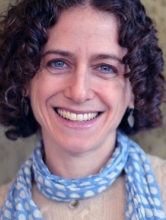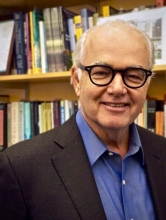In the past decade, standardized tests of academic achievement have been the main gauge of students’ progress and teachers’ and schools’ effectiveness. Yet, for the bulk of our nation’s history, academic and nonacademic outcomes were, together, the business of schooling; neither one, by itself, could adequately prepare young people for adulthood. Recently, the education pendulum has swung back toward the idea, if not the practice, that a combined academic and social-emotional focus offers the greatest value to students, schools, and society. Social-emotional learning—which overlaps with what some call character education, non-cognitive or “soft” skills, and workforce development—has been described as the missing piece in modern American schooling. Considerable research shows that social-emotional learning (SEL) matters for students’ short- and long-term school and life success. Young people who develop the constellation of cognitive, intrapersonal, and interpersonal skills that constitute SEL graduate from high school and attend college at higher rates than their peers, accrue higher earnings, and enjoy better health. Children living under conditions of scarcity or stress particularly benefit from opportunities to acquire SEL skills. Students from economically disadvantaged homes and communities show heightened improvements in behavioral and academic outcomes when provided opportunities to learn about, observe, and practice these skills. Children who face challenges due to adverse family experiences or early school difficulties are buffered by exposure to high-quality practices that strengthen both academic and social-emotional learning. Much is known about how SEL develops over childhood and early adolescence, and the school programs, practices, and contexts that accelerate that development. But our knowledge is incomplete. Education science, policy, and practice have a long way to go—both on their own and in partnered actions—if we aim to systematically impact academic and social emotional learning for all children in our schools.
What is SEL and How Does it Develop?
The definition of social-emotional learning and related constructs is varied. For some scholars and organizations, SEL emphasizes building personal or moral values. Others stress the ability to regulate emotions, cognitions, and behaviors. Still others focus on the development of mental mindsets (e.g., perseverance, efficacy) or interpersonal skills (e.g., collaboration, communication). The common element across definitions is an emphasis on competence in three core domains:
- cognitive—attention, planning, analysis, problem-solving
- intrapersonal—conscientiousness, perseverance, motivation, self-regulation
- interpersonal—empathy, communication, conflict resolution, teamwork
Often, research isolates these skill domains and the specific skills within each domain. Yet in the real world of children in schools, they are interwoven. Increasingly, scholars consider these domains as part of an interrelated whole with distinct elements that dynamically interact and exert influence as students develop. The course of SEL development is predictable in the context of U.S. schooling. We can forecast the average age when specific cognitive, intrapersonal, and interpersonal skills will develop from pre-kindergarten through eighth grade. We can also predict what these skills might look like during these developmental stages.
Early Childhood and SEL
For example, in early childhood, ages 3 to 5, key cognitive and emotion-regulation skills emerge that support social-emotional learning. These skills include (a) general cognitive capabilities collectively known as executive function, (b) the ability to take the perspective of another person (i.e., theory of mind), and (c) an increase in awareness of and sensitivity to emotion. Executive function involves the ability to hold information in mind in working memory, to inhibit impulsive and unthinking responses to stimulation, and to flexibly shift the focus of attention. Executive function is central to SEL because it assists children in regulating emotions and engaging in positive social interactions with teachers and peers, as well as in navigating increasingly complex academic information. Theory of mind allows for the development of empathy, which facilitates interpersonal interactions, while emotion knowledge and regulation provide a foundation on which later social and academic competence is built.
Middle Childhood, Early Adolescence, and SEL
As children enter middle childhood and elementary school, ages 6 to 10, SEL continues to build on key early competencies to support the emergence of metacognitive awareness, or knowing about knowing. Metacognitive awareness allows children to reflect on social interactions, learning goals, and relationships, and to plan ahead and proactively address potential hurdles or problems. In early adolescence, ages 11 to 14, increases in metacognitive capacity help youth to manage motivation and develop a beneficial mindset that emphasizes self-efficacy and the value of effort. In addition, these metacognitive capacities encourage the development of positive interpersonal interactions and the ability to respond appropriately to complex and/or risky social situations. From childhood to adolescence emerges an awareness of norms (i.e., the central beliefs and behaviors of a group), including norms for aggression, nonviolence, and academic engagement. These social and academic norms at peer group, classroom, and school levels begin to contribute to how young people feel, think, and act—or their individual SEL development.
Poverty and Violence Affect the Development of SEL
Yet, there is profound variability—individual, contextual, sociocultural—in the developmental course of SEL. Multiple layers of interacting forces, from the smallest micro level (genes, gestational age) to the largest macro level (cultural norms, social policies) to spaces in between (families, schools, neighborhoods), play a role in when and how these skills unfold. Two primary sources of variability are socioeconomic disadvantage and exposure to violence. For many children, conditions of relative prosperity and safety provide parental, educational, and health care environments in which SEL capacities can flourish. For other children, conditions of poverty and violence have a profound negative influence on the development of SEL from infancy through adulthood. At the individual and contextual levels, impoverished environments have been shown to be physiologically stressful for children and families. As a consequence, parent-child relationships can be disrupted and stress hormones, both in children and their primary caregivers, reach heights that lead to difficulty with the regulation of emotion and attention, and the thinking skills that underlie executive function. At the sociocultural level, policies, programs, and socioeconomic forces that relegate poor families to crowded, uncertain, and unsafe housing, and neighborhoods with higher than average levels of violent crime and victimization, add a layer of stress and hardship that influences the development of SEL skills.
Evidence that SEL is Malleable for Children in Schools
This variability in SEL development suggests that SEL may be malleable. Longitudinal, field experiments of SEL and related programs in schools confirm this notion. Durlak and colleagues analyzed 213 school-based SEL intervention trials conducted over 20 years with more than 270,000 participants in kindergarten through 12th grade. On average, the interventions had small to moderate positive effects on students’ social-emotional skills (e.g., emotional awareness, problem-solving, and self-regulation) and their mental health, behavioral health, and academic performance. These positive effects doubled in size when the classroom or school intervention entailed a sequenced curriculum, active student involvement, focused SEL components, and explicit targeting of skills. Gains are not limited to SEL in K-12 schooling. Rigorous field experiments of quality pre-K programs that target the whole child (health, behavior, and social and cognitive skills) show long-term effects on school attainment, earnings, and crime in adolescence and adulthood. Recent meta-analyses of afterschool settings suggest improvements in self-concept, school connectedness, social behaviors, and academic performance for students attending high-quality afterschool programs with explicit aims to promote social emotional skills. Beyond experimental and quasi-experimental trials of programs in schools, studies with a range of methods and diverse student and school populations illuminate a set of daily practices that maximize opportunities for social-emotional learning in the educational settings where children ages 3 to 13 spend time. Students benefit when they spend time in classrooms and schools with organized and safe spaces, engaging and challenging instruction, and sensitive and responsive practices. Benefits include cognitive, intrapersonal, and interpersonal skill development, as measured by administrative records, classroom observations, and student and teacher reports, as well as academic achievement, as measured by standardized tests. The advantages incurred are especially pronounced for students experiencing risk due to socioeconomic disadvantage and/or academic or behavioral difficulties. In sum, good practice for SEL is good practice for academic learning, particularly for young people facing distal or proximal risk.
SEL Programs Benefit from Supportive Resources, Policies, and Norms
These SEL programs and practices do not arise in a vacuum. More often, they develop in the context of supportive school and district policies, and local, state, and federal initiatives. Absent these supports, classrooms and schools may have isolated success in targeting and achieving outcomes beyond test scores; but isolation impedes the sustainability and expansion of these practices. With supportive resources, policies, and norms at organizational levels and beyond, implementation can extend beyond single units (classrooms, schools) to networks of schools and districts. In a seminal report, Fixsen and colleagues synthesized implementation research across fields, noting the key role of structural characteristics (e.g., communication, training and coaching, resources) and organizational norms in the ability for schools and other settings to implement and sustain effective interventions and practices. Broader policy-level support is vital, too. All 50 states now have preschool (if not K-12) SEL learning standards; these are buttressed by recent national legislative and executive branch initiatives (e.g., Academic, Social, and Emotional Learning Act of 2013) to inhance SEL research, practice, and dissemination. These organizational and policy supports, alone, are not sufficient to install, sustain, and scale SEL initiatives. But they are necessary.
What Is Needed Next
The science, policy, and practice of social-emotional learning in pre-kindergarten to eighth grade has come a long way. Yet much more remains to be done. Scholars have not fully integrated the science of infant and toddler development, and birth-to-2 childcare settings, with the SEL literature. Critical questions that need to be answered: How do the precursors of SEL unfold in infants and toddlers? Where and how should we intervene to promote SEL development in our youngest citizens? This work will build a bridge to early childhood education settings where SEL practices and programs have thrived for years.
At the other end of the spectrum, experimental trials of SEL and related interventions have largely neglected the developmental period of mid-late adolescence. The transition from high school to college and work is a key time for acquiring SEL or workforce skills, such as planning and organization, communication and collaboration, and perseverance and problem-solving. Given the importance of these skills at the threshold of adulthood, it befits us to study how best to strengthen school and out-of-school spaces to enhance workforce skill development in mid-late adolescence and early adulthood.
Additionally, to identify the most powerful concepts and most reliable, valid, and feasible measures of SEL for use in research and practice, scholars need to discuss and resolve differences in terminology and definitions. Without reasonable levels of agreement and clear and common language, we risk comparing divergent constructs and building education policy on imprecise and impractical knowledge. We can and must avoid that risk.
Lastly, while numerous reviews have identified the common elements of effective SEL programs and practices, few articulate how to facilitate implementation and dissemination of these elements across diverse school, district, and state contexts. Scaling of these common elements and practices to the range of schools that serve our nation’s children is the challenge now before us. It is a challenge that can only be addressed through strong and equal partnerships among policymakers, practitioners, and researchers both within and across communities.
Conclusion
A new generation of research is needed, and is beginning to emerge, on how to integrate effective SEL practices into the interactions that occur in educational settings every day. Such research is only possible in the context of deep and mutual collaboration across stakeholder groups. Robust research-policy-practice partnerships, in conjunction with rigorous methods and relevant solutions, promise to get us closer to the reality of academic and social-emotional learning opportunities for every child in our nation.
Read the Full Report
Attached is a link to the full report with figures and references included.
Full Report


